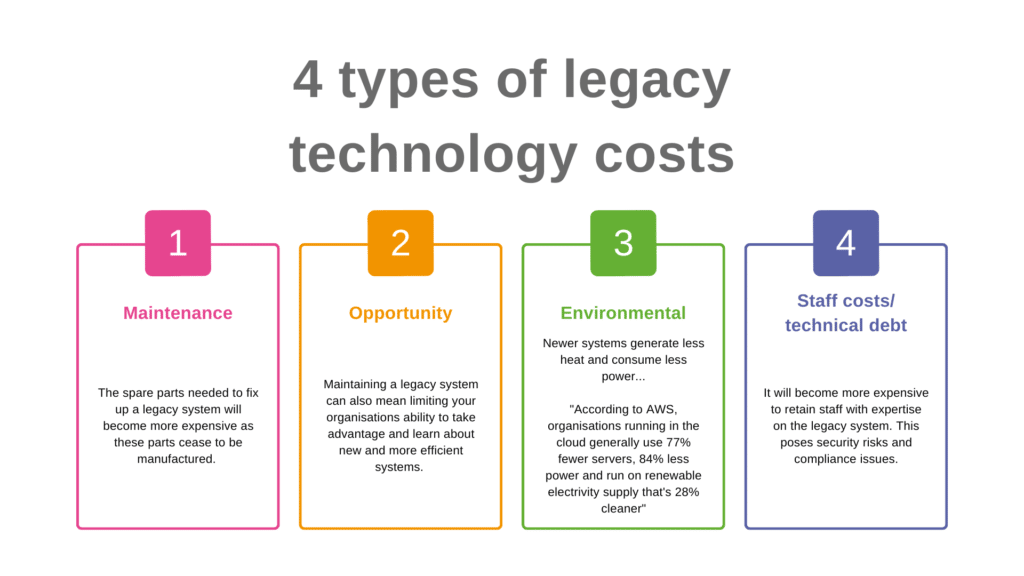‘It’s bigger than legacy systems, it’s moving away from legacy ways of working’ in conversation with Rachel Watts, IT Business Partner at Simmons & Simmons
Legacy technology includes outdated computer systems, application programmes or software that contains all of an organisation’s data. As important as they are, they can frustrate employees because of their poor performance, being out of date and being time consuming. Something many of us can relate to. Additional to these frustrations, legacy technology can pose some major threats to businesses including security risks, irreparable breakdowns, incompatibility with other systems, IT costs and more.
“Worldwide, 75% of employees think workplace technology is unnecessarily complicated. What’s worse – more than one-third of those employees feel that legacy technology makes their job harder.”
To explore these issues around legacy technology further we spoke with Rachel Watts, IT Business Partner at major law firm Simmon and Simmons. Rachel gives us some tips on what to look out for when moving away from legacy systems, where to start the change and how to successfully move your organisation away from legacy systems.
Here’s what we discussed…
What are some of the biggest threats posed by legacy technology and what was the reason for your move?
Incompatibility with other systems
Sped up by the pandemic, there has been a shift in most organisations’ business/IT strategies to encourage more hybrid/flexible working and become more ‘cloud smart’. Legacy systems are considered immature, because they mainly exist only on an organizations’ premises and are not compatible with the increasing cloud-based software and systems.
“62% of IT leaders say integrating legacy systems is the biggest roadblock to
multi-cloud success”
IT Cost
Legacy systems are not very cost-efficient systems, there are four different types of costs they can generate:

The risk of being unsupported
Some of these legacy system’s manufacturers/vendors no longer support the system, which in a way means businesses are ‘forced’ to move away from legacy systems. The implications this risk can have include:
- Irreparable breakdowns, finding tech support to fix breakdowns will be nearly impossible
- Having no more security patching updates provided for the system, leaving the system vulnerable to security hacks and cyber-attacks.
“More than 80 percent of the global organizations surveyed by VMware reported a security breach in 2020 and using outdated security technologies was one of the top three reasons for the compromise.”
What are the most important factors to consider when choosing a new system?
There are three major things that Rachel’s team considered in the early stages of considering new systems:
1. ‘We start with our business’
What are our business requirements, what are our existing problems, what are the lessons that we’ve learnt from previous projects, how does our business want to work today and how might be working over the next 5 years?’5
2. Alignment to our IT strategy ‘with a service and transition hat on’
Aligning the IT strategy to the business strategy leads to better business performance. So when considering a new system, you should be thinking about what the service and support is going to be like? And whether your business can offload some of that service and support to a 3rd party vendor? Offloading can be a great benefit, as it can be cost effective, free up resource from automation and allow for greater IT expertise.7
3. Cost
A 2018 Deloitte survey found that the average enterprise spends 57 percent of its IT budget on supporting business operations and only 16 percent on boosting innovation.8 Moving away from legacy technology can improve the percentage of investments made towards your business’ innovation.
Are you reading this and thinking ‘wow, this all sounds far too familiar…’? Well, you’ve come to the right place. Book in a call with us today to chat through technology systems, we’re happy to answer any questions you might have around upgrades.


